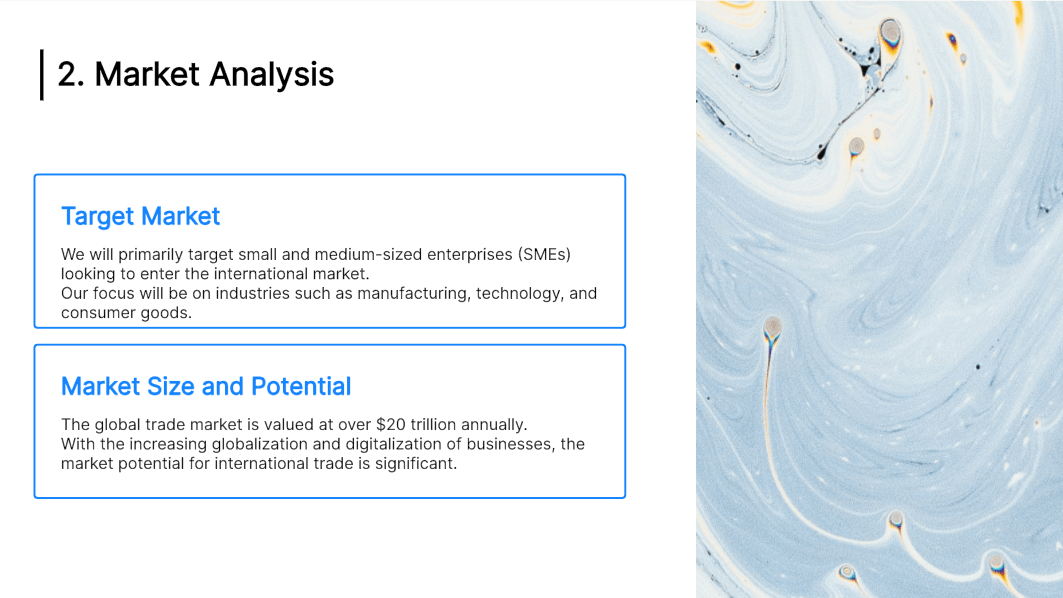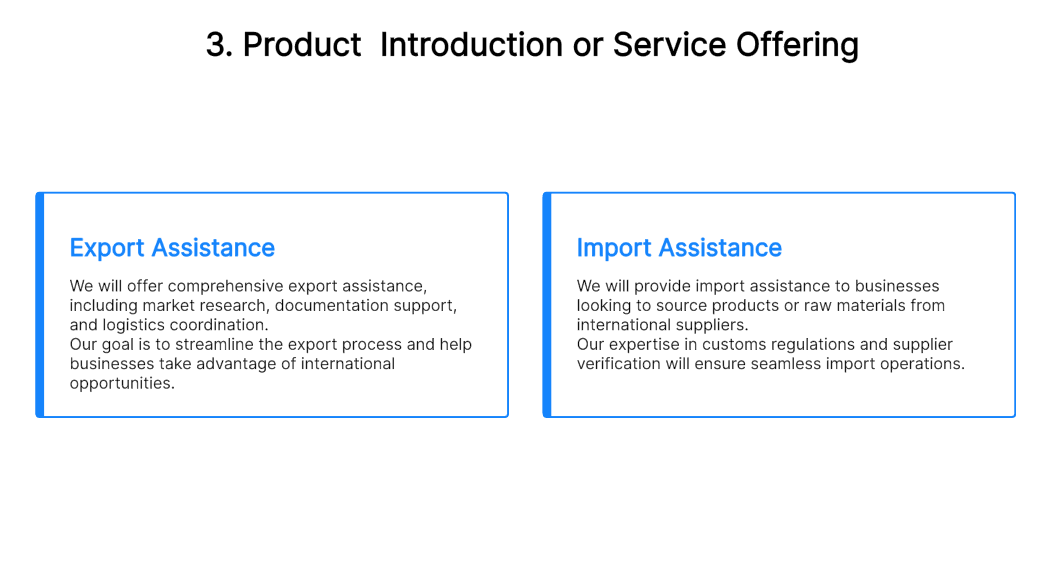Throughout undergraduate studies, there are abundant chances to engage in entrepreneurship competitions. These events not only enhance personal experiences and foster well-rounded skills but also hold the promise of transforming innovative business concepts into reality. Yet, for students unacquainted with professional jargon like market dynamics, operational frameworks, profit strategies, and risk assessment, crafting a comprehensive and polished business plan can pose challenges and bewilderment. This article, coupled with the collaborative online tool Boardmix Whiteboard, outlines the process of crafting a top-notch business plan tailored for college students. Its goal is to aid those gearing up for competitions or nurturing entrepreneurial ambitions.
1. Cover and Table of Contents
The cover and table of contents create the first impression when others review our plan. Therefore, accuracy is crucial.

- Cover: The cover should reflect basic project information, including the project logo, name, responsible person, affiliated school, advisor, and team members.
- Copyright Statement: A separate page for a more formal appearance.
- Table of Contents: It's recommended to include hyperlinks for easy navigation, saving time for reviewers during online evaluation.
2. Market Pain Point Analysis
This section explains the rationale behind our product. We need to integrate and explain current market issues, target user needs, reasons behind these issues, market size, and prospects. A clear and specific analysis of the market status will make our proposal more persuasive.

- Market Issue Description: Use cases, reports, stories, and data to illustrate the pain points vividly.
- Market Reason Analysis: Elaborate on the essence behind the issues, detailing each point.
- Market Size and Prospects: Identify the population or scenarios that need solutions and assess the prospects through data research. Boardmix Whiteboard offers a wealth of market analysis case resources for beginners.
3. Product Introduction
After clarifying market pain points, we need to explain and organize the solutions our team can propose, adhering to principles of specificity, clarity, and focus.

- Product Technology: Describe the technology used, functionalities, and problems solved, including technical parameters, approaches, and outcomes.
- Product Images: Provide physical, model, or operational flow images with explanatory text.
- Product Advantages: Highlight the product's innovation, market, and technical feasibility. Use Boardmix's built-in Competitive Analysis Template to compare our product with competitors on performance and price, making advantages more apparent.
4. Business Model Introduction
This section introduces the feasible operational model constructed by the entire team, centered around the product. It includes user pain points, customer segmentation, unique selling points, solutions, channels, key metrics, competitive barriers, cost analysis, and revenue analysis. A more intuitive method is to use the Business Model Canvas to introduce the business model.
5. Marketing Strategy
To make a product known to the public and market, we need to plan marketing strategies.
- Target Customer Analysis: Analyze who our target customers are, including their numbers, demand levels, and purchasing power.
- Promotion Strategy: How can we make customers aware of our product? What means and channels can we use?
6. SWOT Analysis
SWOT is a strategic analysis method representing a company's internal capabilities (strengths, weaknesses) and external environmental factors (opportunities, threats). Using it for project analysis can better illustrate the feasibility of implementation. Boardmix includes a built-in SWOT Analysis Template and case resources.

7. Risk Analysis and Response
Conducting risk analysis and developing contingency plans are crucial to prevent business plan failure. Potential risks include financial, market, technical, transactional, and management risks.
8. Financial Data and Financing

- Equity Structure and Financing Needs: Clarify the current equity structure, share distribution, reasons for holding shares, and expected financing in terms of share percentage and amount. Specify how the funds will be used.
- Financial Data Tables: Include profit analysis, sales forecasts, etc.
9. Team Member Introduction
- Project Members: List professional expertise, positions, and specific responsibilities. Include relevant achievements if applicable.
- Advisors: Research expertise in the project's field and industry, influence, achievements, and specific responsibilities.
10. Future Plans
It includes short-term and long-term plans with achievable goals.
11. Appendices
It includes certificates, patent introductions, other relevant project materials, research data, project practice images, etc.
This marks the completion of a thorough template for a university student entrepreneurship plan. Organize your materials in line with the provided information, and you're bound to make a lasting impression.
Conclusion
In the process of entrepreneurial planning, conducting extensive business analysis and planning is essential. Boardmix Whiteboard stands out as a robust and feature-rich online whiteboard software designed to foster creativity.
It simplifies the creation of diverse graphics and charts, offering an array of templates for knowledge organization and idea clarification, thus proving highly user-friendly for university students and beginners alike.
Additionally, Boardmix facilitates real-time collaborative editing, enabling online meetings, brainstorming sessions, and presentations, thereby enhancing team collaboration.
Furthermore, Boardmix boasts a wealth of high-quality case studies spanning enterprise management, marketing, operations, and various scenarios, serving as a valuable free learning platform. Boardmix Whiteboard is currently available for personal use at no cost. Give ti a try today!









